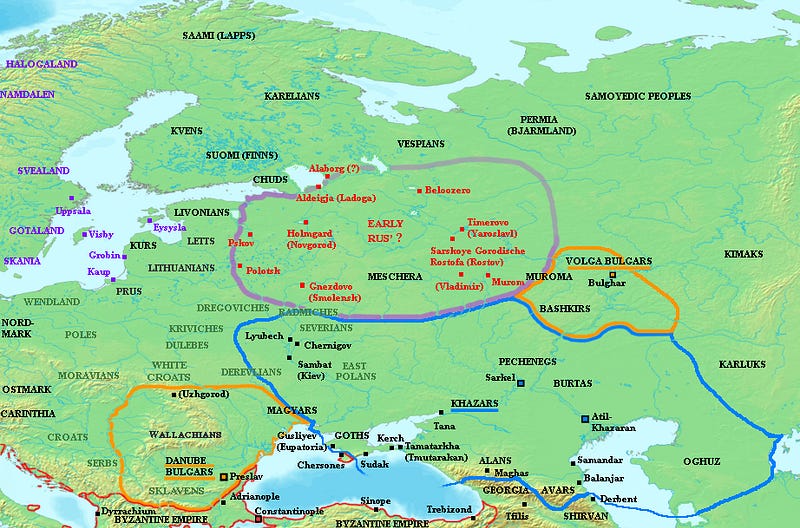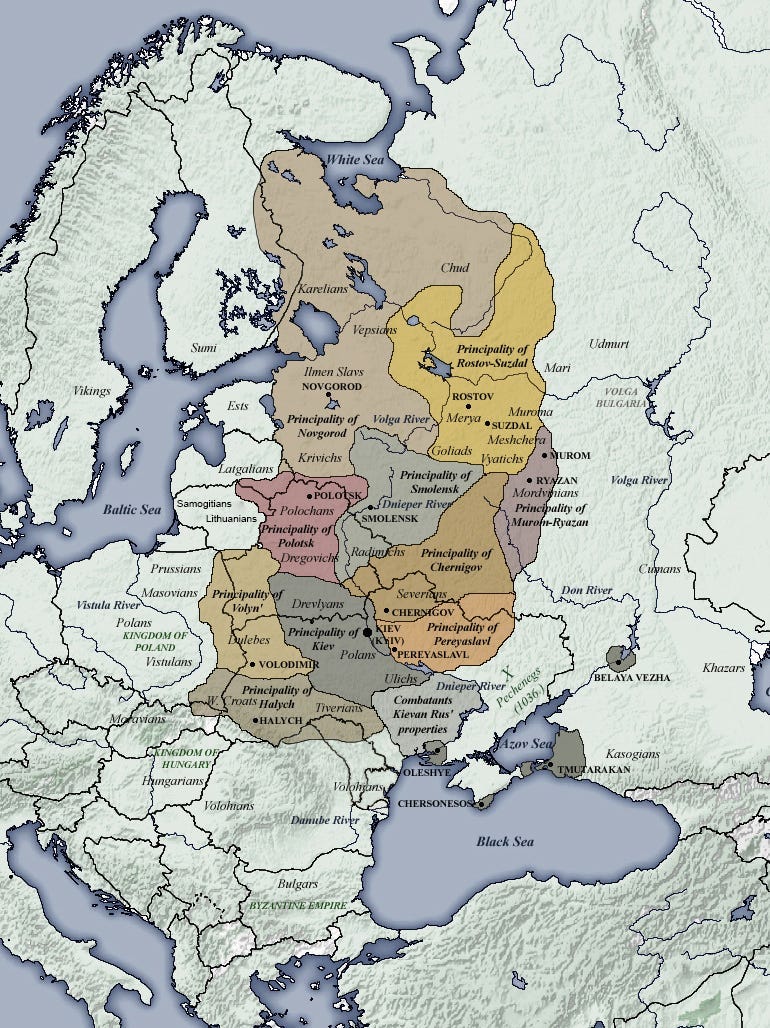The Kievan Rus’: Ancestor of Ukraine and Russia
Vladimir Putin’s claim to dictating Ukraine’s foreign policy is mistaken, to say the least. One nation should have no right to control another nation in this way.
But, despite the inaccuracy of the claim, there is a grain of truth in Russia and Ukraine being connected.
They have the same origin story.
Sometime in the 8th century, a group of Norse raiders, alternatively known as the Varangians or the Rus’, took control of the river basins between the Black Sea and the Baltic Sea. They founded cities, established kingdoms, and ruled over the native Slavic peoples.

One of these rulers, Prince Oleg of Novgorod, united many of these kingdoms into a single confederation centered on the city of Kyiv, the Kyivan Rus’.
Beginning in 882, the Kyivan Rus’ was one of the most powerful states in Eastern Europe. It controlled trade on the Volga, Don, and Dnieper rivers, a status secured in a series of wars with the Byzantine Empire.
Kyiv became one the most important trade centers of Eastern Europe and, with 50,000 people, was one of the larger cities on the continent. Overall, the Kyivan Rus’ was much less densely populated than Western Europe.
But, its control of major trade routes made it a powerful force.
For two centuries, the confederation maintained its power, but internal divisions, tribalism, and the death of its most powerful ruler, Yaroslav the Wise, in 1054, weakened it.
This made it an attractive target for foreign invaders.
So, despite its success in war with the Byzantines and Turkic peoples on the Eurasian steppes, the Kyivan Rus’ would fall due to war.
The Mongol invasions devastated this part of Europe. Entire cities were sacked and destroyed, even Kyiv. The Mongols broke the confederation into its separate principalities, which were required to pay tribute.
Until the rise of the Grand Duchy of Moscow and its throwing off of the yoke of the Golden Horde, the European successor state of the Mongol Empire, this region of the world would remain under the control of the Mongols.
But, its influence did not end there. The Rurik dynasty, the dynasty that ruled the confederation for its entire existence, would continue to rule first as dukes of Moscow and eventually as Tsars of Russia until the rise of the Romanov dynasty in the 17th century.
The first rulers of Russia were descendants of the rulers of the Kyivan Rus’.
The state would also lend its name to two modern-day countries: Russia itself and Belarus. Its legacy lives on in modern Ukraine as well. Ukrainians are ethnically descendants of the Rus’ and also share its capital.
Ukraine and Russia also share a dispute over the remains of Yaroslav the Wise. The legacy of a shared origin looms over both of these countries.
And we are now swept up in this historical drama.




